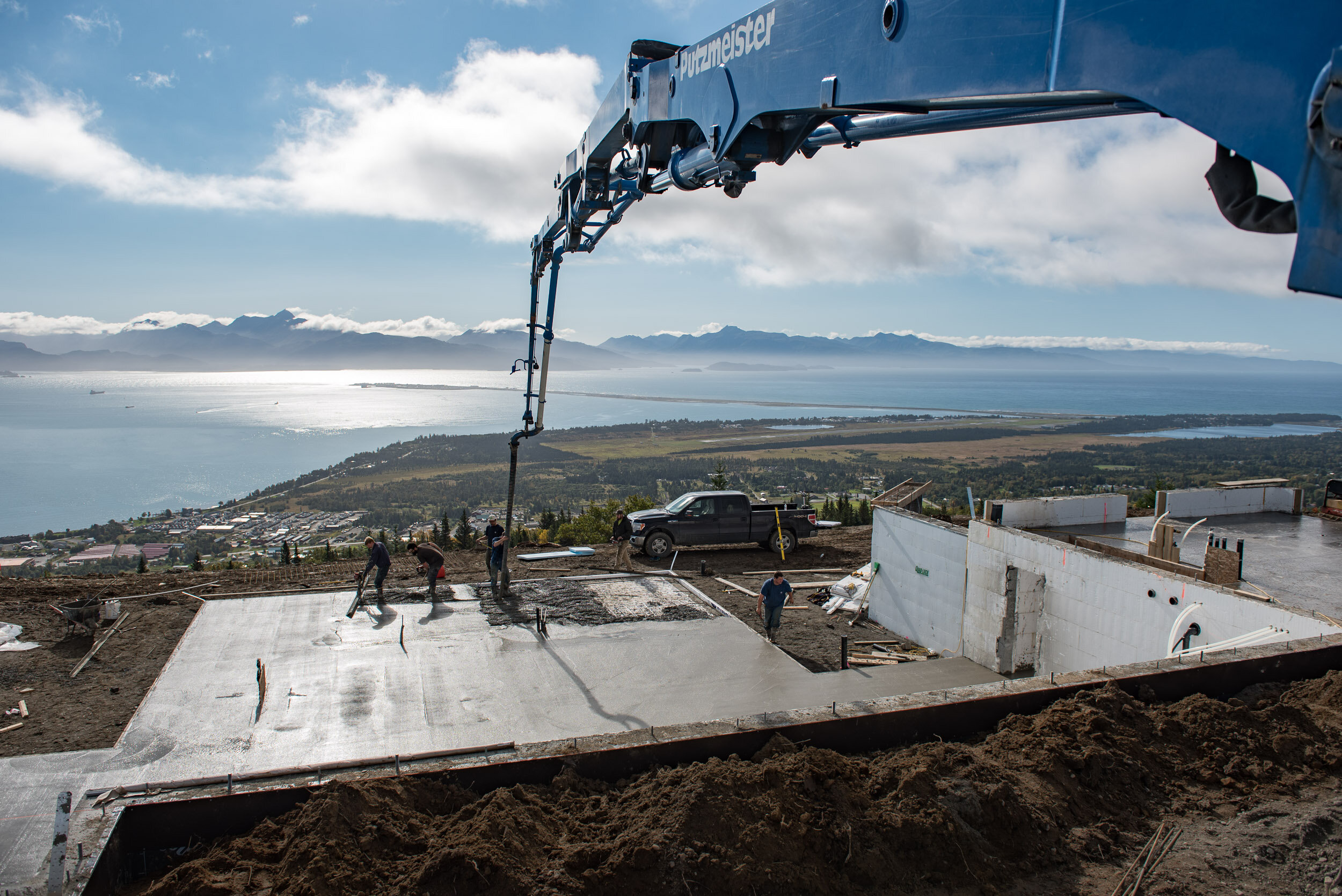
Building with Concrete
A solid investment!
Build to Last
When you build with concrete, you're making a solid long term investment in your project. Whether it's a foundation or and energy-efficient concrete home, concrete adds value to your project as well as superior strength and durability that will last well beyond a lifetime.
The Mass Effect
The pure mass of concrete adds thermal efficiency to a building. The concrete slows heat from passing through walls, therefore keeping homes warmer in the winter and cooler in the summer. Used in conjunction with Insulated Concrete Forms (ICF), concrete can substantially increase the R-Value of your home while decreasing your energy bill. Locally, both Amvic and Quad-Lock ICF blocks are available; select either link to learn more about the energy benefits of these products.
Air-Tight Efficiency
Concrete is poured in semi-liquid form, which allows it to fill any voids in construction with potential to leak air (gaps in insulation, space between studs etc.). Air leakage accounts for up to 40% of energy loss in wood framed structures. Concrete eliminates this major source of energy loss by producing nearly air-tight construction.
Fire Safety
Unlike wood, concrete does not burn which adds a dimension of safety and security to your home beyond what conventional wood framing can offer. Concrete can withstand and prevent the spread of fire from one room to another much longer than wood, and also protects structures from exterior fires.
Low Maintenance
Concrete, especially when used as part of an ICF system, is resistant to rot, mold growth, and general water damage. Concrete is also less likely to be damaged by high winds, storms and other weather elements common in Alaska.
Sound Barrier
The greater mass of concrete walls create a sound barrier reducing the amount of noise from sources like roads, airports and neighbors that will penetrate into your home. Research has shown concrete homes are often two-thirds quieter than wood-framed homes.

